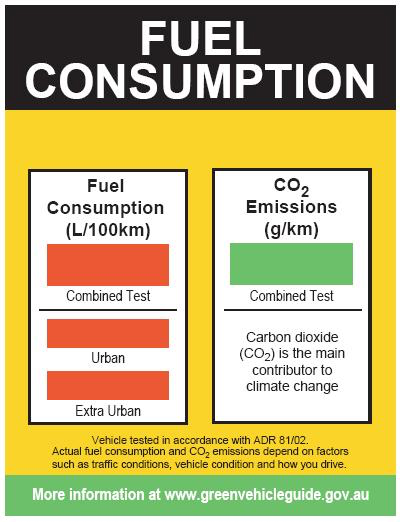Save money by buying or leasing a fuel-efficient vehicle
Australians buy more than one million cars every year.[1]
If you’re looking to save money, a fuel-efficient vehicle is the best choice.
Here are some tips to keep in mind when buying or leasing vehicles for your business:
- If your business owns or leases cars, you should do an annual review to ensure you don’t have too many.
- Assess whether your business is using the right type of vehicles. Buying or leasing bigger and more expensive vehicles can seem attractive from a prestige point of view, but the rising cost of fuel makes fuel-efficient models a better choice for the bottom line of your business.
- Think about the most appropriate car for your needs. If you operate your business in an inner-city area, there are many advantages to having a smaller car, with four cylinders rather than six for instance – they’re cheaper to buy, easier to park and use less fuel.
- If you’re wandering around a car yard, look out for the Fuel Consumption label on cars you’re interested in buying or leasing. This is on the front windscreen and tells you how many litres the car uses to drive 100km. The more fuel-efficient it is, the more money you will save. See later in this tip for more information on how to read a fuel consumption label.
- When you’re buying or leasing a car, the ‘GreenVehicleGuide.gov.au’ website can help your business to save thousands of dollars in future fuel costs. By helping you choose a more fuel-efficient vehicle, it also helps to reduce air pollution.
- The website also has a handy fuel calculator that can determine your annual fuel costs. By entering the number of kilometres you drive each year, you can compare the fuel costs of one vehicle against another before you lease or buy it.
- Additional comparisons include:
- fuel consumption on litres per 100 kilometres.
- an air pollution rating.
- fuel type.
For further information, visit GreenVehicleGuide.gov.au
Look for the fuel consumption label
When you’re buying or leasing a new or second-hand car, make sure you look out for the fuel consumption label. All new passenger cars, four-wheel drives and light commercial vehicles [2] have to display them.
They will tell you how many litres of fuel the vehicle uses to take you 100km. If it uses 5 litres to get you 100km, this is expressed on the label as 5L/100km.
The lower the figure, the more money you’ll save on fuel running costs.
There  are three fuel consumption figures on the label – ‘combined’, ‘urban’ and ‘extra-urban’. These tell you how much fuel the vehicle uses in different driving scenarios.
are three fuel consumption figures on the label – ‘combined’, ‘urban’ and ‘extra-urban’. These tell you how much fuel the vehicle uses in different driving scenarios.
- The figure on the ‘urban’ label will be 20–50% higher than the combined figure. This is because urban driving uses more fuel. If your driving is primarily in urban environments, this figure should guide your purchasing decision – it will save you money on fuel costs.
- If you drive on motorways or freeways a lot, then take note of the ‘extra-urban’ number.
For more information visit: EnergyCut.info/consumption-label-fuel
- 1. EnergyCut.info/fcai-report
- 2. Up to 3.5 tonnes gross vehicle mass


